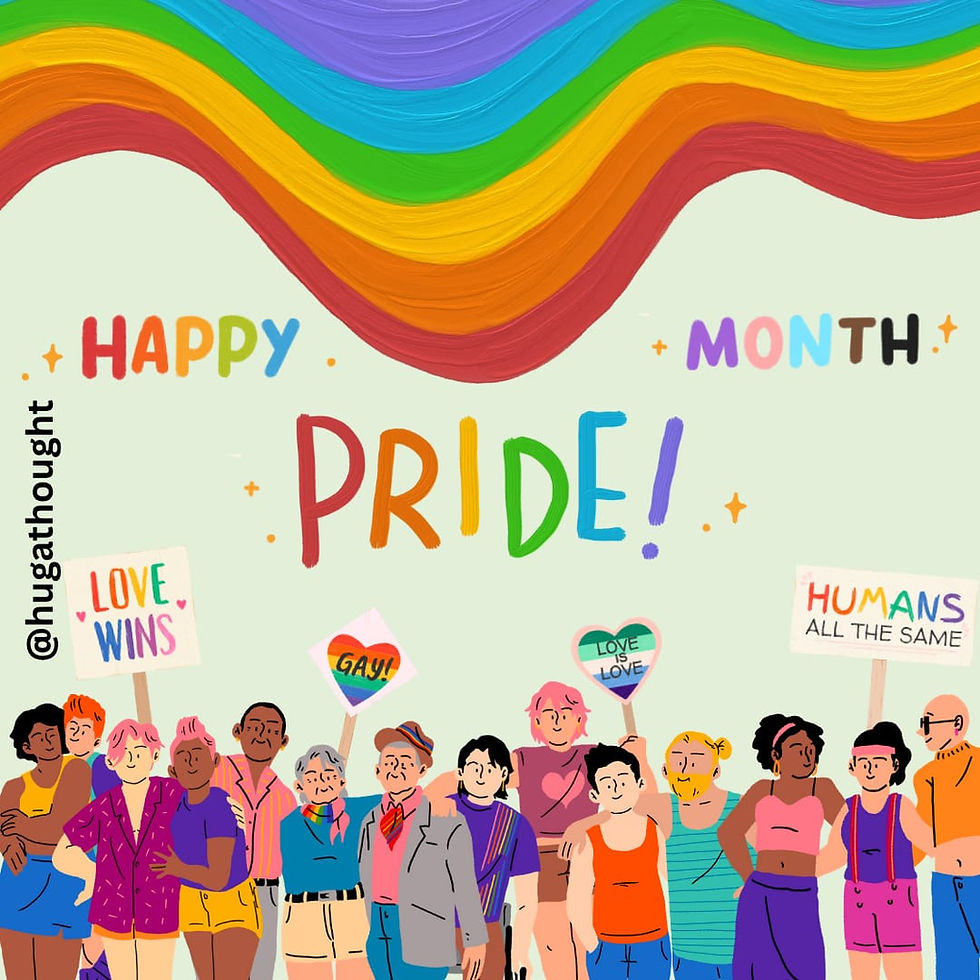Stress? No more!
- Zeina Sravya
- Apr 16, 2021
- 3 min read
Stress is our body’s response to a threat or challenge. Choosing how to perceive stress and respond to it is vital for well-being.
1. Progressive Muscle Relaxation (PMR) –
It was developed by American physician Edmund Jacobson in the early 1920s. The physical component involves the tensing and relaxing of muscle groups over the legs, abdomen, chest, arms and face. In a sequential pattern, with eyes closed, the individual places a tension in a given muscle group purposefully for approximately 10 seconds and then releases it for 20 seconds before continuing with the next muscle group. The mental component requires that the individual focuses on the distinction between the feelings of the tension and relaxation. With practice, the patient learns how to effectively relax in a short period of time.

2. Relaxation Response (RR) –
In the 1960's, Herbert Benson of Harvard University found that there is a counterbalancing mechanism to the stress response. RR is a simple practice that once learned takes 10 to 20 minutes a day to achieve relaxation. The important characteristics of a relaxation program are:
a) Repetition of a word, sound, prayer, thought, phrase or muscular movement, through which concentration is achieved
b) Passive return to the repetition when other thoughts intrude.

3. Guided Imagery (GI) –
GI is not a new approach to helping, but is well established in Native American and other indigenous traditions, in Hinduism, Judeo-Christian, and other religious traditions as well as traditional Chinese medicine. The GI method is taught by a trained professional, an audio or written script in the course of 4-8 weeks, requiring 10 minutes practice per day. GI utilizes the subject‘s personalized images to promote health through several standardized, yet adaptable, techniques, including relaxation/stress reduction. The GI facilitator‘s goal is to enable the subject to engage his/her own images that are symbolic of his/her specific health or life issues, in order to develop health-directed insights, health-promoting behaviour changes, or direct physiologic changes. A facilitated exploration of an image of a safe, comfortable place specific to the participant is involved including sensory recruitment (visual, auditory, olfactory, tactile, and kinesthetic), particularly focusing on linking elements of relaxation in the image to the physiologically relaxed state simultaneously being experienced by the subject.

4. Kelly McGonigal (health psychologist) came up with a finding that stress can make us stronger, smarter and happier if we learn how to open our minds to it. Instead of perceiving stress as an enemy, we need to view it as a friend. It can be done in the following way:
· Perceive stress as energy that you can harness. See it as your body’s response to give you support during the challenging times.
· Let stress help you increase your resilience. When you perceive stress as an opportunity to grow, you become hopeful and engaged.
· When under stress, it’s okay to reach out to others. Under stress, our body releases a hormone called oxytocin which promotes social bonding. Connecting with others can make us feel more optimistic towards the stressor.
Kelly says; how you think about stress matters!
5. Make lifestyle change : having a health routine of mediation, exercise or yoga
6. Monitor hour daily activities that distress you- don’t go beyond your capability where you will be burned out.
7. If required minimize the activities
8. Talk to someone whom you trust it might be your counsellor or friend reach out for help
9. Make use of self-help groups which will make them feel better.
10. Perceive stress as energy that you can harness. See it as your body’s response to give you support during the challenging times.
11. Let stress help you increase your resilience. When you perceive stress as an opportunity to grow, you become hopeful and engaged.
12. When under stress, it’s okay to reach out to others. Under stress, our body releases a hormone called oxytocin which promotes social bonding. Connecting with others can make us feel more optimistic towards the stressor.

REFERENCES:
Benson, H. Klipper, M.Z.The relaxation response. Avon Books; 2000. 23. Jacobs G.D. The Physiology of Mind–Body Interactions: The Stress Response and the Relaxation Response. Journal of Alternative and
Complimentary Medicine, 2001; 7(1), 83-92. 24. Jacobs G.D. Clinical Applications of the Relaxation Response and Mind–Body Interventions. Journal of Alternative and Complimentary Medicine, 2001; 7, 93- 101.
https://www.healtheuniversity.ca/EN/CardiacCollege/Wellbeing/Stress_And_Sense_Of_Control/Pages/psychological-distress.aspx
Joe, U. "Guided imagery as an effective therapeutic technique: a brief review of its history and efficacy research". Journal of Instructional Psychology, 2006; 33(1), 40- 43.
Pawlow L. A., Jones, G. E.The impact of abbreviated progressive muscle relaxation on salivary cortisol. Biological Psychology, 2002; 60 (1), 1-16.
Retrieved from: https://blog.ttisi.com/3-secrets-from-kelly-mcgonigal-that-transform-stress-from-a-vice-to-a-virtue
Retrieved from: https://www.ted.com/talks/kelly_mcgonigal_how_to_make_stress_your_friend/transcript?language=en





This was really helpful. Definitely coming back for more!
Really helpful and much needed these days ♥️
This is very informative! Will definitely integrate them more.
These seem so helpful I'll try these tomorrow. Looking forward to more articles!!
This is incredibly helpful!